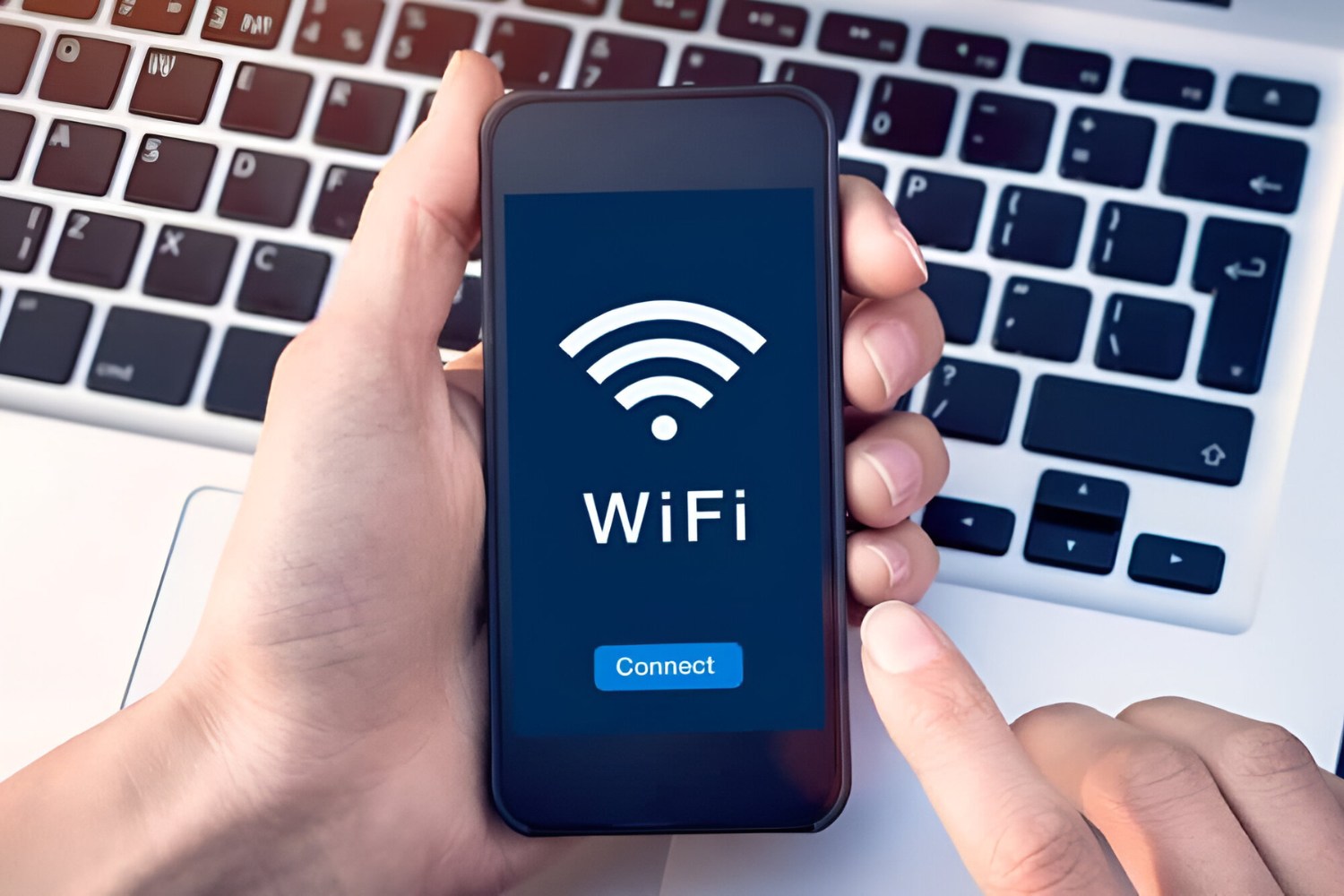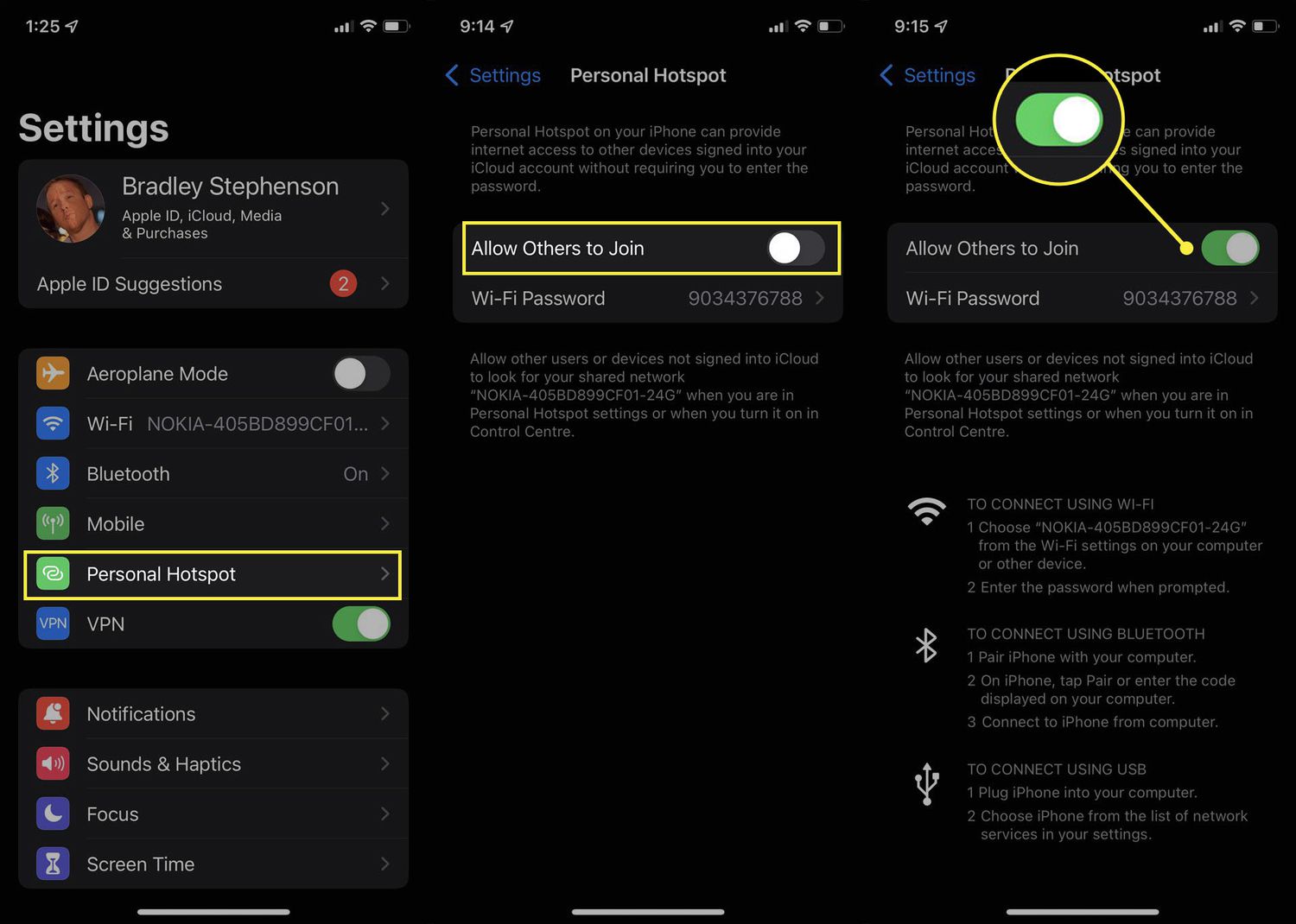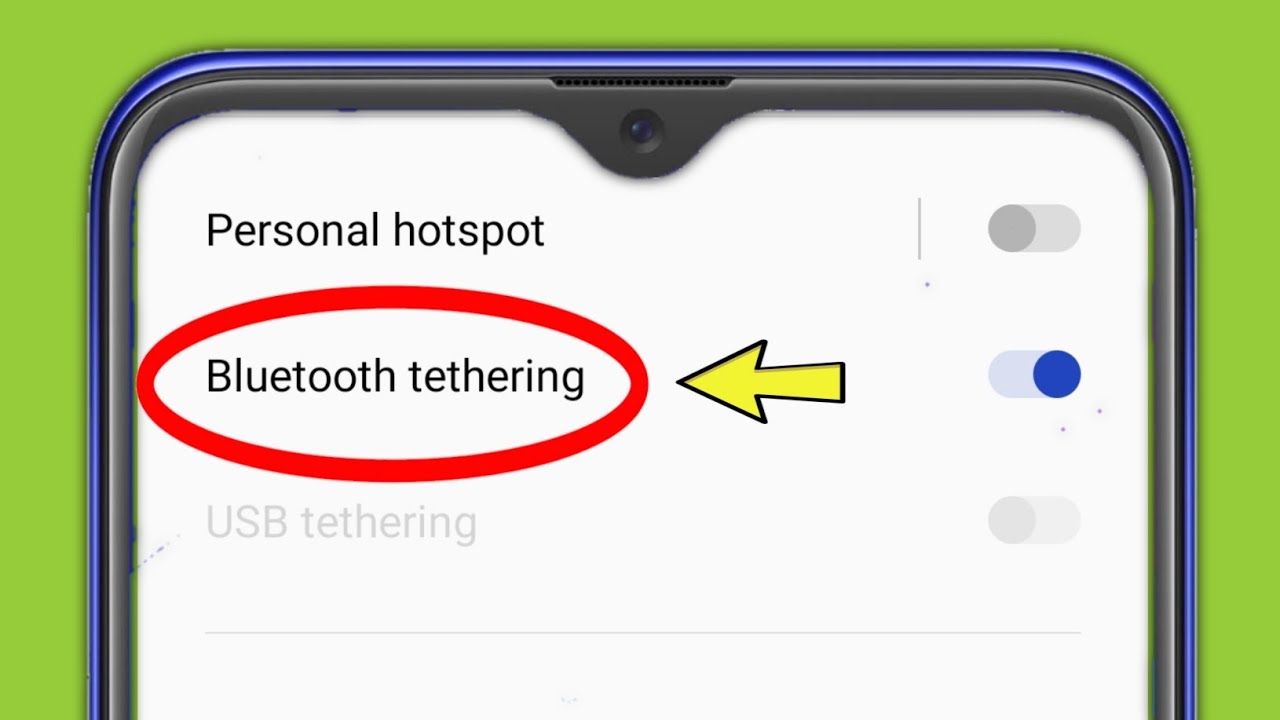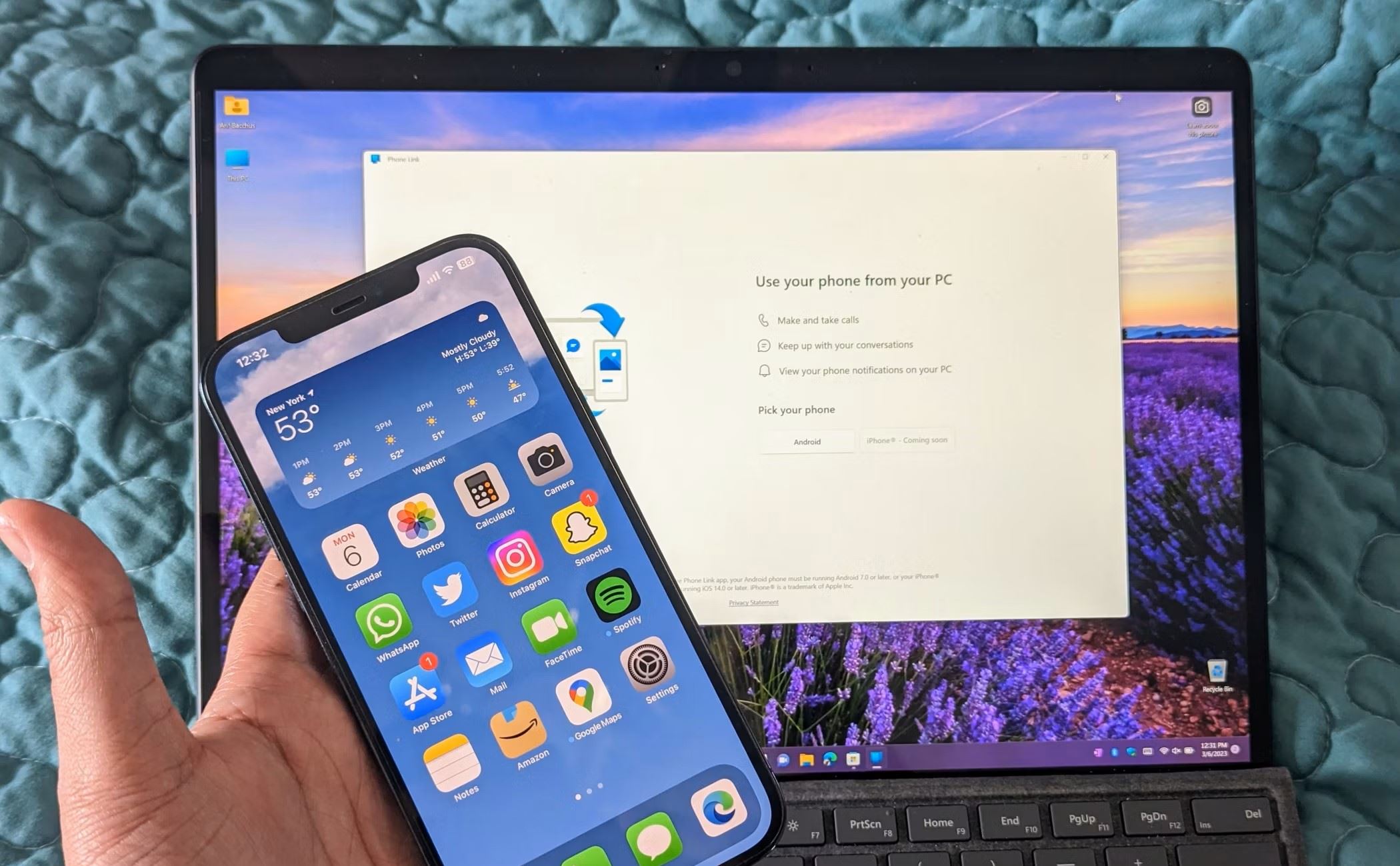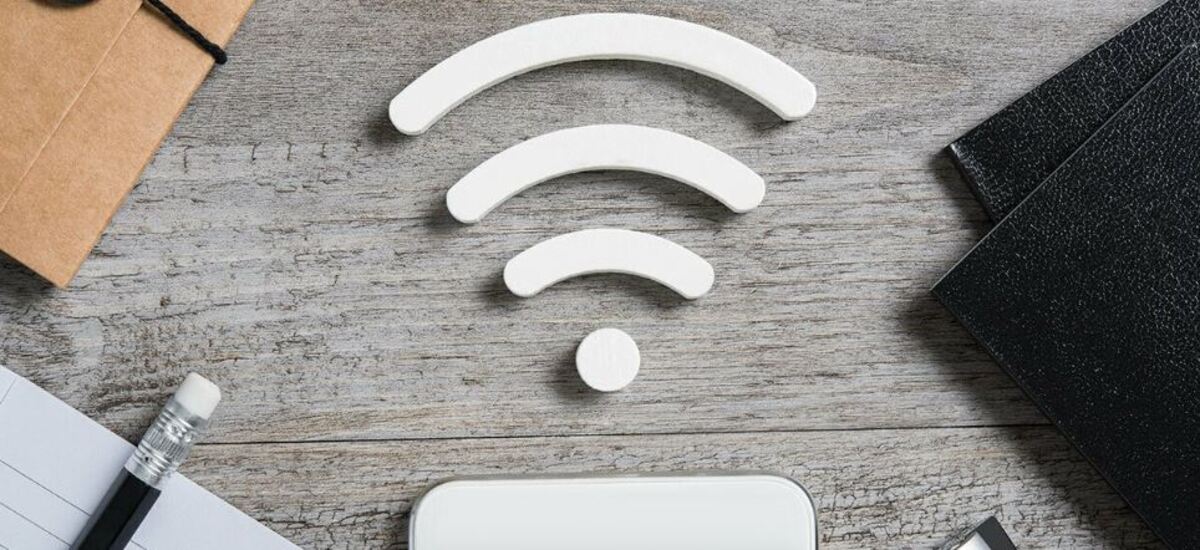What is a Mobile Hotspot?
A mobile hotspot is a device or feature on a smartphone that enables users to share their cellular data connection with other devices, such as laptops, tablets, or other smartphones. Essentially, it allows these devices to access the internet using the mobile data network, providing a convenient solution for staying connected while on the go.
This technology effectively transforms a smartphone into a portable Wi-Fi router, creating a localized wireless network that other devices can connect to. As a result, users can access the internet and perform various online activities, regardless of their physical location, as long as they have cellular coverage.
The concept of a mobile hotspot is particularly valuable in situations where traditional Wi-Fi access points are unavailable, unreliable, or insecure. Whether in a remote location, on a road trip, or in a crowded public space with limited Wi-Fi access, a mobile hotspot offers a versatile and reliable connectivity option.
Moreover, the ability to create a mobile hotspot has become a standard feature on most modern smartphones, making it a widely accessible and convenient tool for individuals and businesses alike. With the increasing reliance on digital connectivity for work, communication, and entertainment, the mobile hotspot has emerged as an indispensable asset for staying connected in a fast-paced, interconnected world.
In essence, a mobile hotspot serves as a bridge between the cellular network and various Wi-Fi-enabled devices, empowering users to leverage their existing data plan for seamless internet access across multiple devices. This functionality has revolutionized the way people access the internet, offering unparalleled flexibility and convenience in a rapidly evolving digital landscape.
Overall, the mobile hotspot represents a pivotal advancement in connectivity technology, empowering users to transcend the limitations of traditional Wi-Fi infrastructure and access the internet with unprecedented ease and flexibility.
How Does a Mobile Hotspot Work?
A mobile hotspot functions as a bridge between the cellular network and Wi-Fi-enabled devices, allowing users to share their mobile data connection with other gadgets. When activated, the smartphone or dedicated hotspot device creates a localized wireless network, similar to a traditional Wi-Fi router. This network is secured with a password, ensuring that only authorized devices can connect to it.
Upon connecting to the mobile hotspot, the authorized devices can access the internet using the cellular data network of the smartphone or hotspot device. This process involves the conversion of the cellular signal into a Wi-Fi signal, which is then broadcasted for other devices to connect to. Essentially, the mobile hotspot acts as a conduit, enabling seamless internet access for devices that are within its range.
The functionality of a mobile hotspot is made possible through the integration of Wi-Fi and cellular technologies within the smartphone or dedicated hotspot device. When a device connects to the mobile hotspot, it effectively leverages the mobile data plan associated with the smartphone or hotspot device, allowing for internet access without the need for a traditional Wi-Fi network.
Furthermore, the mobile hotspot feature on smartphones typically offers customizable settings, allowing users to manage the network name, password, and connected devices. This level of control ensures a secure and personalized experience, enabling users to tailor the hotspot to their specific needs and preferences.
In essence, the seamless operation of a mobile hotspot relies on the convergence of cellular and Wi-Fi technologies, empowering users to extend their internet connectivity to multiple devices with ease. This capability has become increasingly vital in a world where digital connectivity is a cornerstone of productivity and communication, making the mobile hotspot a valuable tool for individuals and businesses alike.
Types of Mobile Hotspots
Mobile hotspots come in various forms, each offering unique features and catering to diverse connectivity needs. Understanding the different types of mobile hotspots is crucial for selecting the most suitable option based on specific requirements. Here are the primary types of mobile hotspots:
-
Smartphone Hotspot: Most modern smartphones are equipped with a built-in mobile hotspot feature, allowing users to share their cellular data connection with other devices. This type of hotspot leverages the smartphone's existing data plan, making it a convenient and cost-effective option for occasional internet sharing. Users can simply activate the hotspot feature in the smartphone's settings and create a Wi-Fi network for other devices to connect to.
-
Dedicated Mobile Hotspot Devices: Dedicated mobile hotspot devices, also known as Mi-Fi devices, are standalone gadgets designed specifically for creating mobile hotspots. These compact devices are equipped with built-in cellular modems and Wi-Fi routers, enabling users to establish secure and reliable wireless networks on the go. Dedicated hotspot devices offer enhanced battery life and often support multiple simultaneous connections, making them ideal for frequent travelers and remote workers.
-
Vehicle Hotspots: Some vehicles are equipped with integrated mobile hotspot capabilities, allowing passengers to access the internet while on the move. These vehicle hotspots utilize the vehicle's cellular connection to provide Wi-Fi connectivity within the car, enabling occupants to stay connected during road trips or daily commutes. This type of mobile hotspot is particularly valuable for families, professionals, and anyone seeking continuous connectivity during travel.
-
Tethering via USB or Bluetooth: In addition to Wi-Fi hotspot functionality, smartphones often support tethering via USB or Bluetooth. Tethering via USB involves connecting the smartphone to another device using a USB cable to share the cellular data connection. Similarly, Bluetooth tethering allows devices to connect to the smartphone and access the internet via Bluetooth technology. While not as commonly used as Wi-Fi hotspots, USB and Bluetooth tethering provide alternative methods for sharing internet connectivity.
Understanding the distinctions between these types of mobile hotspots empowers users to make informed decisions based on their specific connectivity needs and preferences. Whether opting for the convenience of smartphone hotspots, the versatility of dedicated hotspot devices, or the seamless connectivity offered by vehicle hotspots, individuals and businesses can leverage these options to stay connected in various settings and scenarios.
Setting Up and Using a Mobile Hotspot
Setting up and using a mobile hotspot is a straightforward process that empowers users to extend their internet connectivity to multiple devices with ease. Whether utilizing a smartphone's built-in hotspot feature or a dedicated hotspot device, the following steps outline the typical process of setting up and using a mobile hotspot:
-
Accessing the Hotspot Settings: To initiate the setup, users can access the hotspot settings on their smartphone or dedicated hotspot device. In the case of smartphones, these settings are often found within the device's network or connectivity options. Users can enable the hotspot feature and configure the network name (SSID) and password to ensure secure access.
-
Connecting Devices: Once the hotspot is activated, other devices can search for and connect to the newly created Wi-Fi network. This involves accessing the Wi-Fi settings on the connecting devices, selecting the designated hotspot network, and entering the provided password. Upon successful authentication, the connected devices can access the internet through the mobile hotspot.
-
Managing Connected Devices: Users have the option to manage the devices connected to the hotspot, allowing them to monitor and control the network's usage. This includes the ability to view connected devices, restrict access to specific devices, and adjust settings to optimize the hotspot's performance and security.
-
Utilizing the Internet Connection: With the devices connected to the mobile hotspot, users can leverage the shared internet connection for various online activities. Whether browsing the web, streaming media, conducting video calls, or accessing work-related applications, the mobile hotspot provides seamless connectivity across multiple devices.
-
Optimizing Battery and Data Usage: It is essential to consider the impact of using a mobile hotspot on the device's battery life and data consumption. Users can optimize battery usage by adjusting the auto-off feature, which disables the hotspot when not in use. Additionally, monitoring data usage and implementing data-saving measures on connected devices can help manage data consumption effectively.
-
Securing the Hotspot: To ensure the security of the mobile hotspot, users should employ robust password protection and encryption protocols. This prevents unauthorized access to the hotspot network and safeguards sensitive data transmitted over the connection.
By following these steps and best practices, users can harness the full potential of a mobile hotspot, enabling seamless internet connectivity for their devices in various contexts. Whether for remote work, travel, or everyday convenience, the ability to set up and utilize a mobile hotspot offers unparalleled flexibility and connectivity on the go.
Mobile Hotspot Data Plans and Limitations
Mobile hotspot data plans play a pivotal role in determining the accessibility, usage limits, and overall cost associated with leveraging a mobile hotspot for internet connectivity. These plans are offered by cellular carriers and are often tailored to accommodate varying data needs and usage patterns. Understanding the nuances of mobile hotspot data plans is essential for making informed decisions and optimizing the usage of this connectivity solution.
Data Allowances and Throttling
Mobile hotspot data plans typically include specific data allowances, indicating the amount of data that can be utilized for hotspot connectivity within a given billing cycle. These allowances range from a few gigabytes to unlimited data, with corresponding pricing structures. It is important for users to assess their typical data consumption and select a plan that aligns with their usage patterns to avoid overage charges or service interruptions.
Moreover, some carriers implement data throttling measures, which can impact the speed of the hotspot connection once the allotted data limit is reached. This can result in reduced speeds for hotspot usage, affecting the overall user experience. Understanding the implications of data throttling is crucial for effectively managing data usage and optimizing the performance of the mobile hotspot.
Plan Flexibility and Add-Ons
Carriers often offer flexibility in mobile hotspot data plans, allowing users to adjust their data allowances based on evolving needs. This may involve upgrading to a higher data tier for increased usage or downgrading to a more cost-effective plan during periods of reduced connectivity requirements. Additionally, carriers may provide add-on options for temporary data boosts or enhanced hotspot features, offering users the flexibility to customize their plans as needed.
Network Coverage and Roaming
The effectiveness of a mobile hotspot is closely tied to the network coverage provided by the carrier. Users should consider the availability of cellular coverage in their primary usage areas, as well as the potential for roaming charges when using the hotspot in areas outside the carrier's native coverage area. Understanding the extent of network coverage and associated roaming policies is essential for ensuring consistent and cost-effective connectivity.
Device Compatibility and Plan Restrictions
Certain mobile hotspot data plans may impose restrictions on the types of devices that can connect to the hotspot. Additionally, carriers may specify compatibility requirements for dedicated hotspot devices, smartphones, or other connected gadgets. It is imperative for users to review these restrictions and compatibility guidelines to ensure seamless connectivity and avoid potential limitations when using the mobile hotspot.
In essence, mobile hotspot data plans are a critical aspect of leveraging this connectivity solution, influencing the accessibility, performance, and cost-effectiveness of mobile hotspot usage. By carefully evaluating data allowances, understanding throttling policies, exploring plan flexibility, and considering network coverage, users can make informed decisions and optimize their mobile hotspot experience based on their unique connectivity needs and preferences.
Tips for Using a Mobile Hotspot Efficiently
-
Monitor Data Usage: Keeping a close eye on data consumption is crucial for efficient mobile hotspot usage. By regularly monitoring data usage across connected devices, users can avoid exceeding data limits and incurring additional charges. Many smartphones and dedicated hotspot devices offer built-in tools to track data usage, empowering users to make informed decisions and adjust their connectivity habits as needed.
-
Optimize Connected Devices: Limiting the number of connected devices and optimizing their settings can significantly enhance the efficiency of a mobile hotspot. Encouraging users to prioritize essential tasks and avoid bandwidth-intensive activities on the hotspot network can help maintain optimal performance for all connected devices. Additionally, adjusting device settings to minimize background data usage and automatic updates can conserve data and improve overall efficiency.
-
Utilize Offline Modes and Cached Content: Encouraging users to leverage offline modes and pre-cached content on their devices can reduce reliance on the mobile hotspot for certain activities. For example, downloading music, videos, and documents for offline access can minimize the need for continuous internet connectivity, thereby conserving data and optimizing the efficiency of the mobile hotspot.
-
Implement Data-Saving Measures: Many applications and devices offer data-saving features that can be utilized to minimize data usage when connected to a mobile hotspot. These measures may include reducing video streaming quality, enabling data compression for web browsing, and restricting background data usage for specific applications. By implementing these data-saving measures, users can maximize the efficiency of their data allowance and prolong the usability of the mobile hotspot.
-
Utilize Wi-Fi Direct and Ad-Hoc Networking: In scenarios where direct device-to-device connectivity is required, leveraging Wi-Fi Direct and ad-hoc networking capabilities can bypass the need for a traditional hotspot network. This can be particularly useful for sharing files, collaborating on projects, or conducting local multiplayer gaming without consuming data through the mobile hotspot.
-
Consider External Antennas and Signal Boosters: In situations where cellular signal strength is a concern, users can explore the use of external antennas and signal boosters to enhance the performance of their mobile hotspot. These accessories can help improve signal reception, resulting in more reliable connectivity and improved efficiency, especially in areas with limited cellular coverage.
By implementing these tips and best practices, users can maximize the efficiency of their mobile hotspot usage, optimize data consumption, and ensure a seamless and reliable internet connectivity experience across their connected devices.







